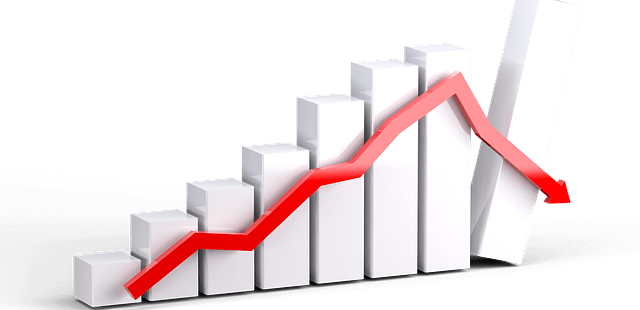Using a glide path is standard practice in retirement planning. The basic idea is simple. When you’re a long way off from retirement you should be heavily invested in risky assets with high returns. As you approach retirement you should gradually rebalance into less risky assets. Let’s take a look at this more closely.
Why have a glide path?
In the past most people converted their entire retirement fund into an annuity upon retirement. Let’s say you were fully invested in risky equities all through your working life. What if the market crashed the day before you bought your annuity? In that case your annuity would give you much less income than expected. Ouch!
But say you’d gradually rebalanced to a less risky portfolio. Then the crash would have had less effect. This was the original rationale for a glide path and it made intuitive sense.
What if you choose drawdown?
Since pension freedoms, annuities have fallen out of fashion. Many people choose to live off drawdown. If that’s your intention, does a glide path still make sense? The answer’s not quite so obvious. A market crash just before retirement could still recover later. Is that any worse than a market crash 10 years earlier?
Say you’re 10 years away from retirement and making regular investments. If the market crashes and you keep on investing, you’re buying at a cheaper price. Over time things should average out. This is known as pound cost averaging. Paradoxically, for long term investors regular investing into risky assets is safe.
A crash at or after retirement has a different effect. Assume you’re making regular and constant withdrawals. Then a crash means you’re withdrawing a higher percentage of your investments. Then there’s less left to grow if there’s a recovery. The earlier the crash occurs, the more damaging it is.
Are you willing to vary your withdrawals in response to market conditions? If so you can mitigate the effect of downturns or crashes. You’ll always need to cover your essentials. But if you’re flexible on your discretionary spending you can vary your drawdown accordingly.
A more flexible glide path
The need for a glide path leading up to retirement based on an annuity was clear. For retirement based on drawdown it also seems to make sense. But the possibility of mitigation might mean it’s less critical.
In fact opinion differs among experts regarding the right level of risk after retirement. Research by JP Morgan indicates that as we age our willingness to take risk decreases. But also our capacity to withstand risk increases. These changes roughly balance out. So our risk level should remain constant beyond a certain age.
The EvolveMyRetirement approach also assumes an eventual steady risk level. It also assumes a steady starting level, and a glide path between the two. But the EvolveMyRetirement app has built-in optimisation. So it doesn’t assume fixed starting or final risk levels. Neither does it assume when the glide path should start or finish. Instead it optimises your glide path based on your individual circumstances.
A traditional glide path leading up to your retirement date may be best. Or maybe the glide path should end before or after retirement. Maybe the glide path should start after retirement and end in the distant future (maybe even beyond your likely lifespan). It’s possible that no future change in risk level is desirable. Or possibly a sudden change makes more sense. And for couples with different retirement dates, that’s an added complication.
Everybody’s circumstances are unique. Only our intelligent retirement calculator is able to tailor your glide path to your circumstances.
